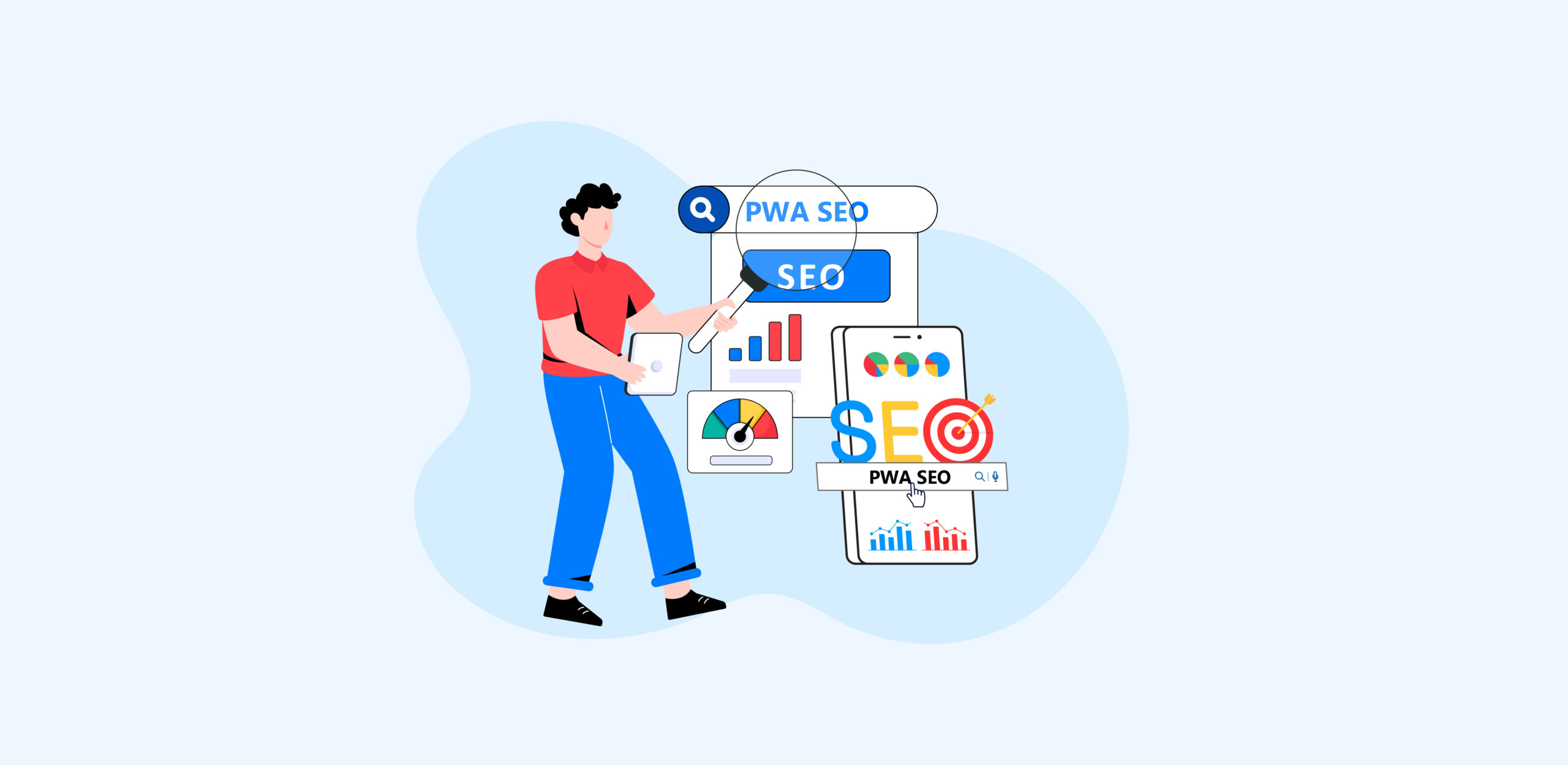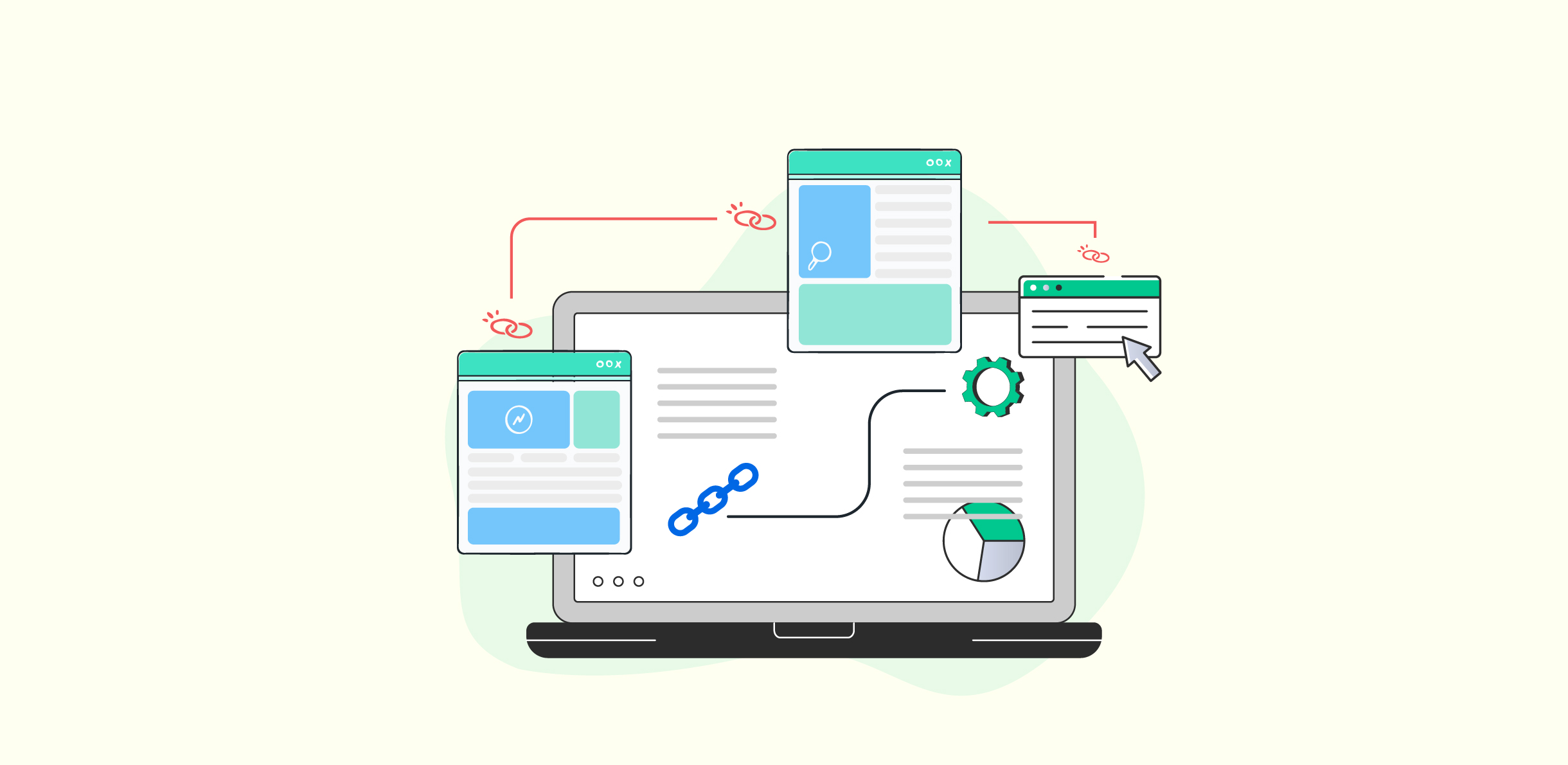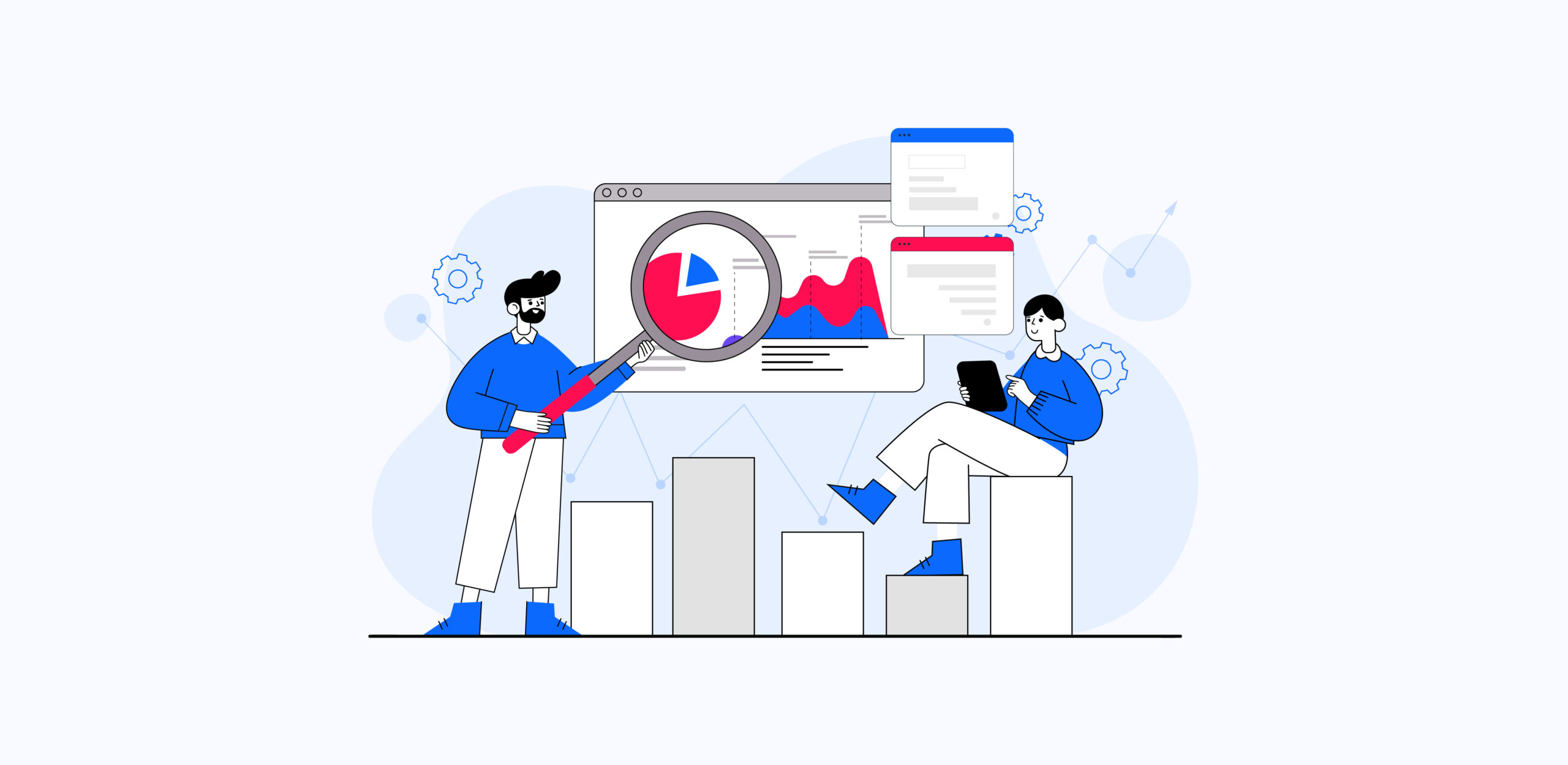PWA stands for progressive web apps, and they’re essentially a combined breed of visually appealing websites created using native apps as inspiration. In essence, PWA SEO is done for web applications like MakeMyTrip and Taylor Stitch, with bespoke designs and a comprehensive inventory of products demonstrating both visual and technical capabilities.
This web development marvel requires high precision and planning from web developers. With the right technique, they’re able to perfectly integrate both website features and app-like layouts seamlessly in one project. So, it’s settled that the development part is quite complex, but you’ll be surprised to know that PWA SEO is rather straightforward.
Web indexing for PWAs is simple and quick, thanks to advanced JavaScript rendering by Google, which makes them easy to optimize for search engine results pages.
This article is designed to help you navigate the PWA SEO techniques and benefits to make better ranking decisions and land an established place on the SERP.
Progressive Web Applications (PWAs): What They Are and How They Work
PWAs or ‘progressive web applications’ is a word used for websites providing a seamless experience — similar to mobile apps — with comprehensive visual elements yet easy and quick navigation. These websites are custom-made by developers using advanced HTML, CSS, and JavaScript frameworks to provide a dynamic experience even with low-speed internet conditions.
PWAs are essentially web applications that can be accessed using search engines like Google, Yahoo, and Bing. However, unlike other traditional websites that open pages by reloading the code with every new page, PWAs load the entire code at once. This provides a fast and seamless user experience, allowing visitors to navigate through different website pages and capabilities within seconds.
Now, let’s get into some technical features to understand how a PWA works and the underlying techniques that make these websites interactive, installable, and user-friendly.
Faster Speed — The faster speed of PWAs is attributed to their application shell architecture. This is a shell file that caches data from the first visit to make loads faster in the next.
Can Be Installed — Installable due to the web app manifest file in JSON format. All basic information regarding the website is stored in this file, including layout, colors, icons, and the home screen.
Offline Accessibility — PWA websites can save data and work offline to avoid interruptions in user operations. This is possible with the service worker — a JavaScript file — that runs in the background to manage and retrieve cache.
App-Like Features — PWAs have the capability to send push notifications using the service worker file, consequently helping re-establish the interest of previous visitors.
Provides Data Privacy—PWAs employ the Transport Layer Security (TLS) framework to protect user data and personal security.
How Does PWA Coding Help SEO?
Yes, PWAs have a website design that automatically provides them an edge in the search engine results. But how exactly? Let’s discover below:
Improved User Experience
PWA sites are designed with the purpose of offering ease of access and faster navigation. Their responsive design and seamless user experience keep visitors engaged for long, reducing bounce rates by a significant margin. Longer dwell time is an indication for search engines that this website is trustworthy.
Helps Boost Conversion Rates
The ability to navigate all pages of a website seamlessly is what compels users to continue with their online journeys. As more visitors place orders and complete their purchase cycles, it leads to improved conversion rates for the website.
Case in point: When MakeMyTrip website switched to a PWA friendly design, it soon witnessed a 160% boost in user sessions with a consistent growth in conversion rates.
Moreover, Spotify also transitioned to a PWA layout in 2019 and was able to push its conversion rates by 46% within the same year! This is how PWA technology boosts conversions.
Pushes More Reach & Engagements
Online buyers are prone to distractions, and that is why re-engaging strategies must be employed to regain their attention. PWAs have features such as offline functionality and push notifications, which help users rejoin their online journeys exactly where they left off.
Take this example. Your customer added some of your products to their cart, but their internet connection suddenly started glitching. In this case, the bad connection will not lead to data loss, which means they can continue shopping as the internet connection is being restored. Minimal disruptions in UX help users stay engaged.
Moreover, users can switch devices and still have the same user interface. This strategically maintains reach by accommodating customers wherever they exist online.
By optimizing the UX/UI of a website, offering faster accessibility, and using device-compatible features, PWAs improve performance metrics like impressions, clicks, dwell time, and conversions. As search engines assess websites based on these signals, technical SEO for PWAs becomes essential in ensuring that their web architecture, speed, and crawlability align with modern ranking factors, placing your site higher on search result pages.
SEM and SEO
Just as regular websites are discoverable, so is a Progressive Web App. SEO and SEM therefore work well for both. Because they are web-based, PWAs can be effectively optimized using both Search Engine Optimization (SEO) and Search Engine Marketing (SEM). This means search engine crawlers can index their content, boosting visibility and search rankings through strategic use of relevant keywords.
Ways To Implement & Leverage PWA SEO
Once your progressive web application is set up, the next step is to rank your PWA on SERP. This ensures that your site will be discoverable to those browsing online for services and products related to your niche.
But how do you improve PWA discoverability on search platforms to get the most out of your online business? By implementing standard SEO strategies, particularly white hat practices. For further analysis, take a peek into the top ten PWA SEO techniques to get your PWA featured within the SERP.
Use Structured Data
Structured data refers to schema markup, which is a type of HTML code added to websites to help search engine crawlers better interpret the context and structure of content on your webpages.
Additionally, it allows Google to create rich snippets related to different pages on your website. This includes news articles, product pages, blogs, videos, recipes, and more. Here is what rich snippets look like:
The above shows article snippets gathered via schema markup, revealing page details such as the title of the article, details of the publishing channel, and publishing time. Here is another example of schema markup displaying product information.
To put it simply, schema lets you present your page in a more structured manner, with easy-to-navigate digital assets and elements. Besides other things, you can use this code to indicate details like pricing, ratings, reviews, and authors.
Rotten Tomatoes applied structured data to 100,000 pages on their website. Later, it was noted that these pages had a 25% higher click-through rate compared to those without structured data. This explicitly endorses the idea that schema is important for rankings.
Structured data helps search engine crawlers extract page information with ease. In a nutshell, the more information you provide, the higher your chances of appearing in Google’s rich results, ultimately garnering more clicks and traffic for your website.
Create Unique & Authoritative Content
As with any website, PWA SEO also heavily relies on high-quality content. Your core objective should be to provide value, context, and updated information through your content. Any website that follows the EEAT guidelines has a higher chance of appearing on the first page of Google. Moz says in their EEAT blog:
“High E-E-A-T content is more likely to rank well in search results…”
This shows a clear correlation between quality content and SERP rankings. Here, we have mapped out which content strategies are most favorable for on-page SEO for PWA.
- Information-rich content with clear information that provides users with context and clarity on a particular subject.
- Naturally integrate high-relevance keywords in your content to let both crawlers and users know what your content is about.
- Create easy-to-scan content using headings, bullets, and tables to make information more digestible.
- Make sure that the content is fresh and updated every few months.
Define Meta Tags & Descriptions
Meta titles and descriptions are a great way to obtain clicks by providing a simple yet attractive preview of your page to searchers. While metadata does not directly impact your SEO for progressive web apps, it does lead to better interpretation of webpage content. The key is to use your focus keywords to effectively influence click-through rates.
Build Backlinks
Backlinks play an instrumental role in establishing the authority of a website. A strong backlink profile is a signal for search engines that this website is trustworthy and relevant. When building backlinks for a PWA, seek relevant websites with high visibility in your niche. Getting backlinks from trusted sites with quality content and reasonable traffic places your PWA as a valuable resource in the search engine database.
Follow this checklist when searching for backlinks to boost SEO for apps:
- High authority website (use forum, guest posting sites, or influencer collaborations)
- Reputed in the niche of your PWA
- Provides do-follow links
Link quality is the fundamental element of any link-building strategy, which is why it’s important to focus on quality rather than numbers to get an advantage on search engine rankings.
Include Sitemap for Indexation:
A sitemap is a prerequisite for any PWA site to even begin appearing in search results. Submit your XML sitemap on GSC (Google Search Console) to let Google bots scan your website. Once the crawlers have understood the structure and subject of your content, it will be able to get indexed faster.
Every page must be indexed before it can show up on SERP, so this is a no-compromise step for PWA SEO optimization.
Check Your Website’s Robots.txt:
Robots.txt is a text file available in the root directory of your website. It contains a list of pages that are not to be indexed by crawlers. Google Webmaster states that:
“A robots.txt file tells search engine crawlers which URLs the crawler can access on your site.”
So, when optimizing a PWA, it’s recommended to ensure that your important pages are not blocked by this file. Check and remove any pages from robots.txt to make sure they can be discovered by search engine crawlers.
Optimize URL Structures
URL structures also require optimization for better search performance. Using your focus keyword in the URL ensures that your web page is read and understood during indexing.
Ensure readability by using legible text in URLs, so it’s understandable for humans as well as search crawlers. Clarity and a simplified term for the relevant query will further optimize your PWA URL structure.
Any pages with duplicate content must also be tagged using canonical URLs. This is important because pages containing similar content have a higher chance of getting hammered down by the algorithm.
Secure Your Website with HTTPS
PWAs require HTTPS as a security layer because they do not follow privacy standards like native apps. HTTPS keeps your PWA away from fraudulent transactions, unauthorized access, and malicious attacks.
Provide users browsing security by implementing HTTPS via an SSL (Secure Sockets Layer) or TLS (Transport Layer Security) certification. This protocol encrypts the connection to protect data, ensuring integrity and privacy as data is shared between the server and browser.
Regularly Track Performance Trends
Any efforts put into SEO optimization are useless unless you know it is driving positive results. For your PWA SEO to really deliver profitable results, it must be integrated with tools like Google Search Console and Analytics. This lets you get a peek into important performance metrics, like traffic, keyword positions, impressions, clicks, leads, sign-ups, and more. You can use this data to determine your future marketing strategies.
As a first step, determine your brand KPIs. Keep an eye out for things like page views, bounce rates, dwell time, and session duration to identify which parts of the PWA require tweaks.
It’s also essential to manage reviews and ratings from customers and make sure negative feedback is addressed effectively. Use this feedback as a way to improve your product and services and attain a higher satisfaction rate. Features like pop-up review windows and star rating options should be introduced to encourage feedback submissions.
As part of the tracking campaign, audit your website to determine technical insufficiencies, such as broken links, 404 errors, loading failures, and more. Fix them to help your PWA climb back up on the SERP stairway.
Utilize user tracking and other techniques to analyze how your customers behave on your website, and make tweaks accordingly. Any efforts that go into optimizing performance must be done after a comprehensive evaluation of evolutionary search techniques. Make SEO, Featured Snippets, and GEO your ballpark to help your progressive web application succeed in the evolving era of search.
Make Your PWA Indexable
You may have all the ingredients to push your website to the top of the SERPs, but can Google crawl your PWA? If the answer to this is no, your optimization efforts are in vain, unless your website pages are made readily crawlable by search engine bots. Here are three techniques to improve and assist crawlability:
Hybrid Rendering — Combined server-side rendering and client-side rendering that work in conjunction. This system allows server-side rendering to take over when a page is loading, so the entire HTML code of the page becomes visible to search crawlers in its initial phase, making it a lot easier and faster to index.
Static Rendering — Creating an HTML file for primary pages allows the server to fetch data at build-time. These pages are readily available to crawlers via the cached result, which ultimately improves indexing time.
Takeaway:
PWA or progressive web apps combine the functionality of a mobile application with website features to provide an all-around user experience. The website technology naturally favours SEO rankings by means of improved UX/UI, conversion rates, and user engagement.
Optimizing progressive web apps for SEO requires a detailed assessment of website-wide technical factors, as well as on-page elements. Checklist points — it should be indexable, have a web security certification, be optimized for keywords, have structured data, and contain backlinks. In short, the SEO possibilities for PWA are countless, and they should be implemented strategically to get a reasonable ranking outcome on search engine results pages.










